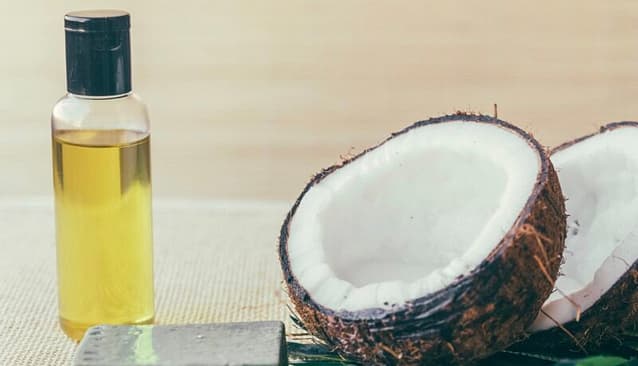The Guide to Oil Pulling for Optimal Oral Health is an authoritative resource on the ancient practice of swishing natural oils in the mouth. This holistic approach reduces plaque, enhances gum health, and promotes fresher breath, contributing to oral well-being.
I. Introduction
Welcome to the enlightening journey into the ancient practice of oil pulling with the guide to oil pulling for optimal oral health. Steeped in history and rooted in Ayurvedic tradition, this guide unveils the secrets of swishing natural oils for enhanced gum health, reduced plaque, and a brighter smile. Discover the profound significance of incorporating this age-old ritual into your daily natural oral care routine.
II. What is Oil Pulling?
Oil pulling is an ancient Ayurvedic technique originating from traditional Indian medicine. It involves swishing natural oils in the mouth. It aims to enhance oral health by reducing plaque, improving gum health, and promoting overall well-being.
Ayurveda recognizes oil pulling as a holistic approach to oral hygiene. This method aligns with Ayurvedic principles, promoting balance and overall wellness by enhancing oral health through the natural swishing of oils.
III. How Does Oil Pulling Work?
Typically performed in the morning on an empty stomach, a tablespoon of natural oil (such as coconut, sesame, or sunflower oil) is swirled in the mouth, typically around 15-20 minutes. During this time, the oils interact with oral bacteria, toxins, and debris, pulling them away from teeth and gums.
The process targets the reduction of plaque and bacteria, fostering improved gum health and a breath that feels fresher. Swishing natural oils in the mouth attracts and binds with bacteria, toxins, and impurities.
This binding action helps reduce plaque and enhance gum health and oral hygiene. Explore the dynamic interplay between oil and oral bacteria to grasp the science behind this ancient and effective practice.
IV. Benefits of Oil Pulling for Oral Health
Discover the ancient practice that fosters optimal oral well-being, from plaque reduction to enhanced gum health and a brighter smile. Unveil the natural path to a healthier, more vibrant mouth.
A. By incorporating oil pulling into your oral care routine, you can experience:
1. Reduced Plaque
Oil pulling is believed to help reduce plaque through several mechanisms:
a. Bacterial Binding
The swishing action of oil in the mouth helps the oil mix with saliva and bind to oral bacteria, toxins, and other impurities.
b. Mechanical Cleansing
As the oil is moved around the mouth, it can reach areas between teeth and along the gumline that might be missed by regular brushing. This mechanical cleansing action may contribute to the removal of plaque.
c. Anti-Microbial Properties
Certain oils, such as coconut oil, have antimicrobial properties. These properties may help in reducing the growth of bacteria in the mouth, contributing to a decrease in plaque formation.
d. Anti-Inflammatory Effects
Some oils used in oil pulling, like sesame oil, have anti-inflammatory properties. Inflammation is associated with gum disease, and by reducing inflammation, oil pulling may help prevent plaque buildup.
2. Enhanced Gum Health
Oil pulling is thought to enhance gum health through various mechanisms:
a. Reduction of Harmful Bacteria
Oil pulling involves swishing natural oils in the mouth, which can help reduce the population of harmful bacteria. These bacteria contribute to gum inflammation and disease, so reducing their numbers may support healthier gums.
b. Anti-Inflammatory Properties
Some oils used in oil pulling, such as sesame oil, have anti-inflammatory properties. Inflammation is a key factor in gum disease, and by reducing inflammation, oil pulling may help improve gum health.
c. Improved Oral Hygiene
Oil pulling is often performed in addition to regular brushing and flossing. By incorporating oil pulling into a comprehensive oral hygiene routine, individuals may experience enhanced gum health as part of their overall oral care regimen.
d. Promotion of Circulation
The swishing action of oil pulling may stimulate blood flow to the gums, promoting circulation and potentially aiding in the healing process of gum tissue.
e. Moisturizing Effect
Some oils used in oil pulling, such as coconut oil, have moisturizing properties. This may help keep the gums hydrated and less prone to irritation.
3. Teeth Whitening
Oil pulling is believed to contribute to teeth whitening through several mechanisms:
a. Removal of Surface Stain
The swishing action of oil in the mouth during oil pulling is thought to help remove surface stains on the teeth. This can be particularly beneficial for extrinsic stains caused by factors like coffee, tea, or smoking.
b. Reduction of Plaque
Oil pulling is known to reduce plaque, which is a soft, sticky film containing bacteria that can contribute to staining. By minimizing plaque, oil pulling may help prevent the formation of new stains.
c. Antimicrobial Properties
Some oils used in oil pulling, such as coconut oil, have antimicrobial properties. This may contribute to a cleaner mouth, potentially reducing the buildup of bacteria and stains.
d. Promotion of Overall Oral Health
Oil pulling is often seen as a holistic oral care practice. Supporting gum health and reducing harmful bacteria, it may create an environment that promotes overall oral health, including a brighter smile.
4. Fresher Breath
Oil pulling is believed to contribute to fresher breath through various mechanisms:
a. Reduction of Bacteria
The swishing action of oil in the mouth during oil pulling helps remove bacteria, toxins, and impurities. This reduction in harmful bacteria can lead to a cleaner and fresher oral environment.
b. Minimization of Plaque
Oil pulling is known to reduce plaque, which is a soft, sticky film containing bacteria. By minimizing plaque, oil pulling may help address one of the contributors to bad breath.
c. Anti-Microbial Properties
Some oils used in oil pulling, such as coconut oil, possess antimicrobial properties. This can contribute to the overall reduction of bacteria in the mouth, including those causing bad breath.
d. Improved Gum Health
Oil pulling's potential positive effects on gum health may also contribute to fresher breath. Healthy gums are less likely to harbor bacteria that can lead to unpleasant odors.
e. Enhanced Oral Hygiene
Oil pulling is often recommended as an additional step in oral hygiene alongside regular brushing and flossing. This comprehensive approach can contribute to maintaining a healthier and more pleasant-smelling mouth.

V. Best Oils for Oil Pulling
Explore the unique benefits each natural oil offers, from the antimicrobial properties of coconut oil to the gum-supporting features of sesame oil. Uncover the key to a refreshing and effective oil-pulling experience.
A. Best natural oils for oil pulling and their properties beneficial for oral health:
Table highlighting the best natural oils for oil pulling and their key properties beneficial for oral health:
| Key Properties for Oral Health | |
|---|---|
Coconut Oil | Antimicrobial, anti-inflammatory, reduces plaque and whitens teeth. |
Sesame Oil | Antibacterial, anti-inflammatory, and promotes gum health. |
Sunflower Oil | Rich in antioxidants, supports gum health, and reduces oral bacteria. |
Olive Oil | Anti-inflammatory and contains polyphenols and helps combat bad breath. |
Peppermint Oil | Antimicrobial, freshens breath, and adds a pleasant flavor. |
These oils contribute to a holistic approach to oral health when used in the oil-pulling process.
B. What types of natural oils are best for oil-pulling
Dive into the properties of coconut, sesame, sunflower, and olive oils, unlocking the secrets to a healthier and brighter smile through this ancient practice.
1. Coconut Oil
Both virgin and extra virgin coconut oil are popular choices for oil pulling.
2. Sesame Oil
Cold-pressed sesame oil is commonly used for oil pulling.
3. Sunflower Oil
Opt for high-quality, cold-pressed sunflower oil.
4. Olive Oil
Extra virgin or cold-pressed olive oil is suitable.
Ensure the oil chosen is high quality, preferably organic, and appropriate for consumption. Experiment with different oils to find the one that suits you best.
C. You may taste the natural oil during the swishing process of oil pulling.
The taste will vary depending on the type of oil you use.
1. Coconut Oil
Coconut oil has a distinct flavor characterized by its sweet, nutty, and tropical taste. The flavor of coconut oil is often described as rich and aromatic, with subtle hints of coconut. It can vary slightly depending on factors such as the processing method and whether it's refined or unrefined. Unrefined, virgin coconut oil retains more of the coconut's natural flavor and aroma, while refined coconut oil has a milder taste.
2. Sesame Oil
Sesame oil has a distinctive and robust flavor with a nutty and slightly sweet profile. The taste can vary between different types of sesame oil. Light or untoasted sesame oil has a milder flavor, while dark or toasted sesame oil is richer and more intense.
3. Sunflower Oil
Sunflower oil has a mild and neutral taste. It is known for its light flavor, making it suitable for various culinary applications without overpowering the taste of the dishes.
4. Olive Oil
Olive oil typically has a mild, fruity, and slightly peppery taste. The specific flavor can vary based on the type and quality of the olive oil, with extra virgin olive oil often possessing a more robust and complex taste compared to refined olive oils. The taste may also be influenced by factors such as the region where the olives are grown and the processing methods used.
It's common to experience the taste of the oil initially. But as you continue with the practice, some people find it more tolerable. Enhance the taste and freshness by incorporating a drop of essential oil, such as peppermint.
VI. Step-by-Step Guide to Oil Pulling for Optimal Oral Health
Uncover the ancient practice's secrets as we walk you through each stage, from choosing the right oil to perfecting the swishing technique. Elevate your oral wellness with this comprehensive guide. Follow these simple yet impactful steps:
A. Choose Your Oil
Opt for coconut oil, sesame oil, or a preferred alternative.
B. Start Small
Begin with a tablespoon and gradually increase as you become accustomed.
C. Swish Mindfully
Swirl the oil in your mouth for 15-20 minutes, allowing it to interact with bacteria.
D. Spit, Don't Swallow
Dispose of the oil in a trash bin, avoiding sink clogs.
E. Rinse and Brush
Conclude with a thorough rinse and regular brushing. Enhance oral health naturally by embracing this guide for a seamless and effective oil-pulling routine.
VII. Tips and Tricks for a Successful Oil Pulling Experience
Unlock the full potential of your oil-pulling journey with valuable tips and tricks. Dive into expert advice to enhance your oral care journey, from consistency tips to innovative practices that elevate your experience. Elevate your oil-pulling routine for optimal results and a healthier, brighter smile.
A. Elevate your experience
1. Consistency is Key
Make oil pulling a daily habit for sustained benefits.
2. Add Essential Oils
Enhance the antimicrobial effects by incorporating essential oils.
3. Oil Temperature Matters
Warm the oil slightly for a more comfortable swishing experience.
4. Multitask Mindfully
Utilize the swishing time for light activities to stay consistent.
5. Stay Hydrated
Hydrate before and after oil pulling to aid detoxification. Uncover these insights for a successful oil-pulling routine, making your journey to optimal oral health enjoyable and effective.

VIII. Potential Risks and Precautions
In the pursuit of optimal oral health through oil pulling, it's crucial to be aware of potential side effects and address common concerns and misconceptions.
A. Initial Discomfort
Some may experience jaw fatigue or increased saliva initially.
B. Time Commitment
Concerns about the 15-20 minute swishing period are common.
C. Swallowing Oil
Emphasize the importance of spitting out the oil to avoid ingestion.
D. Allergic Reactions
Address potential allergies to specific oils and suggest alternatives.
Embark on your oil-pulling journey with confidence by comprehending and addressing these factors. It can maximize benefits while alleviating any concerns.
IX. Frequently Asked Questions
Can I swallow the oil during oil pulling?
No, it's crucial to spit out the oil to prevent ingestion of bacteria and toxins.
What should I do if I accidentally swallow the oil after swishing?
If you accidentally swallow the oil after swishing during oil pulling, don't panic. It's generally safe. The oil may contain bacteria and toxins from your mouth, but the amount is typically minimal.
You can drink a glass of water to help flush out any remaining oil. Avoid inducing vomiting, as this is unnecessary and may cause more discomfort. If you have concerns or experience any adverse reactions, it's advisable to consult with a healthcare professional.
Are there any potential side effects?
Some may experience initial discomfort or jaw fatigue, but these are generally temporary.
Can I practice oil pulling daily?
Yes, consistency is key for optimal results. Make it a part of your daily oral care routine.
Are there alternatives for those with allergies?
Yes, explore alternative oils that do not trigger allergic reactions.
Can oil pulling replace regular brushing and flossing?
While beneficial, oil pulling is a supplementary practice. It's essential to continue regular brushing and flossing for comprehensive oral care.
When can I expect to see results?
Results may vary, but many notice improvements in breath freshness and gum health within a few weeks.
Is oil pulling suitable for everyone?
Consult with a healthcare professional, especially if you have specific oral health concerns or existing medical conditions.
Is oil pulling applicable for all ages?
Generally, oil pulling is considered safe for adults; however, it may not be suitable for very young children who might find it challenging to swish the oil for the recommended duration. It's advisable to consult with a healthcare professional or a dentist, especially for children, elderly individuals, or those with specific oral health concerns. Always ensure the chosen oil is safe for consumption, and if there are any doubts or concerns, seek professional guidance.
Explore the Guide to Oil Pulling for Optimal Oral Health for more in-depth insights into this ancient practice.
X. Additional References
- Effectiveness of Oil Pulling for Improving Oral Health: A Meta-Analysis (2022) https://www.ncbi.nlm.nih.gov/pmc/articles/PMC9602184/
- Microbiological Effects of Virgin Coconut Oil Pulling in Comparison with Palm Oil Pulling as an Adjunctive Oral Hygiene Care for Patients with Gingival Inflammation: A Randomized Controlled Clinical Trial (2022) https://www.ncbi.nlm.nih.gov/pmc/articles/PMC8796787/
- Effect of Sodium Flouride Mouthwash and Ozone-Infused Oil Pulling Solution With Coconut Oil on Mechanical Properties and Surface Characterization of Copper-Nickel-Titanium Orthodontic Archwires (2023) https://www.ncbi.nlm.nih.gov/pmc/articles/PMC10332333/
XI. Conclusion
As we conclude this enlightening journey through the ancient practice of oil pulling, encapsulated in the Guide to Oil Pulling for Optimal Oral Health, let's revisit the myriad benefits awaiting you. The transformative power of oil pulling is undeniable from reduced plaque and enhanced gum health to a brighter smile and fresher breath.
Now armed with knowledge and understanding, I encourage you to integrate oil pulling into your daily oral care routine. Embrace the ritual, unlock its potential, and witness the positive changes in your oral health.
The Guide to Oil Pulling for Optimal Oral Health is your companion on this path to a healthier, brighter smile – a timeless tradition meeting modern well-being. Cheers to your journey toward optimal oral health!
XII. My Experience
Embarking on the oil-pulling journey, the Guide to Oil Pulling for Optimal Oral Health has been a revelation for me. Initially skeptical, I experienced a noticeable shift in my oral well-being. The daily ritual brought a sense of freshness and contributed to a cleaner, brighter smile.
Over time, my gums felt healthier, and the process became a mindful and therapeutic part of my morning routine. The Guide to Oil Pulling for Optimal Oral Health truly transformed my oral care habits, and I encourage everyone to embark on their journey to experience the remarkable benefits firsthand.
Visit my blog posts about natural toothpaste and natural mouthwash to complete your oral care. Ready to transform your oral care routine?
Explore my other blog posts and discover a wealth of insights and information. Connect with me to share your experiences and discoveries – let's embark on this journey together!

 Simple. Natural. Better.
Simple. Natural. Better.